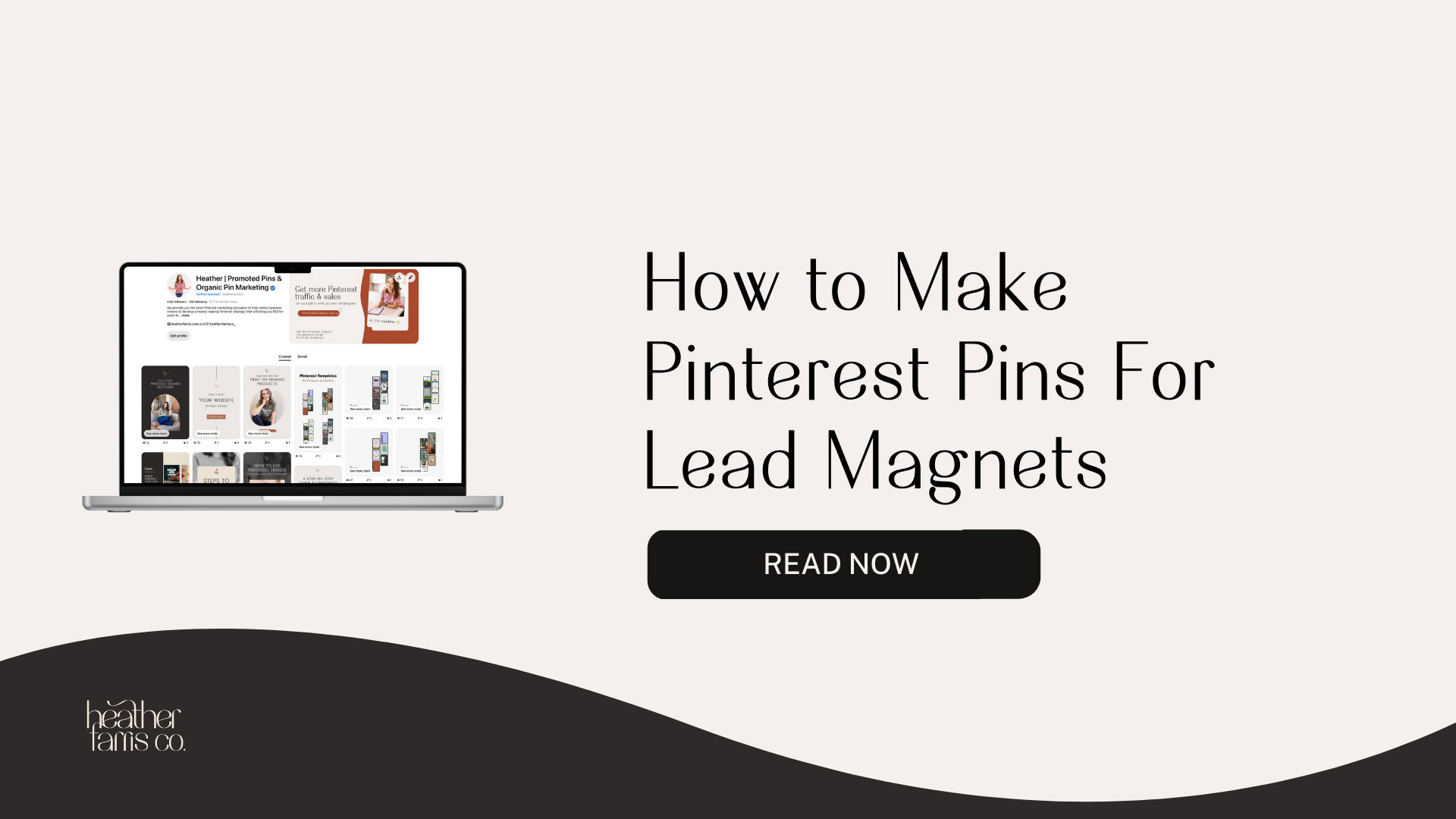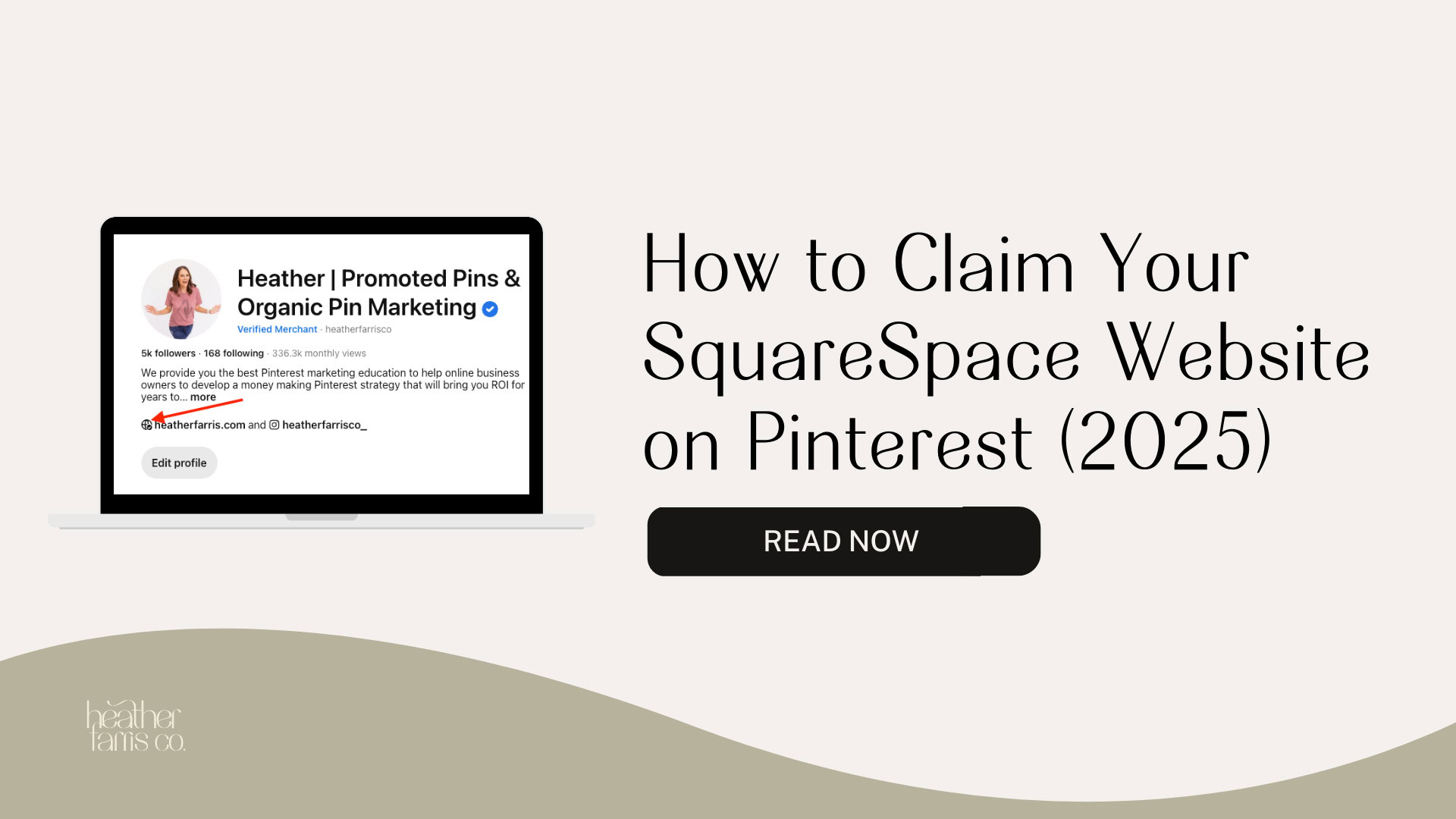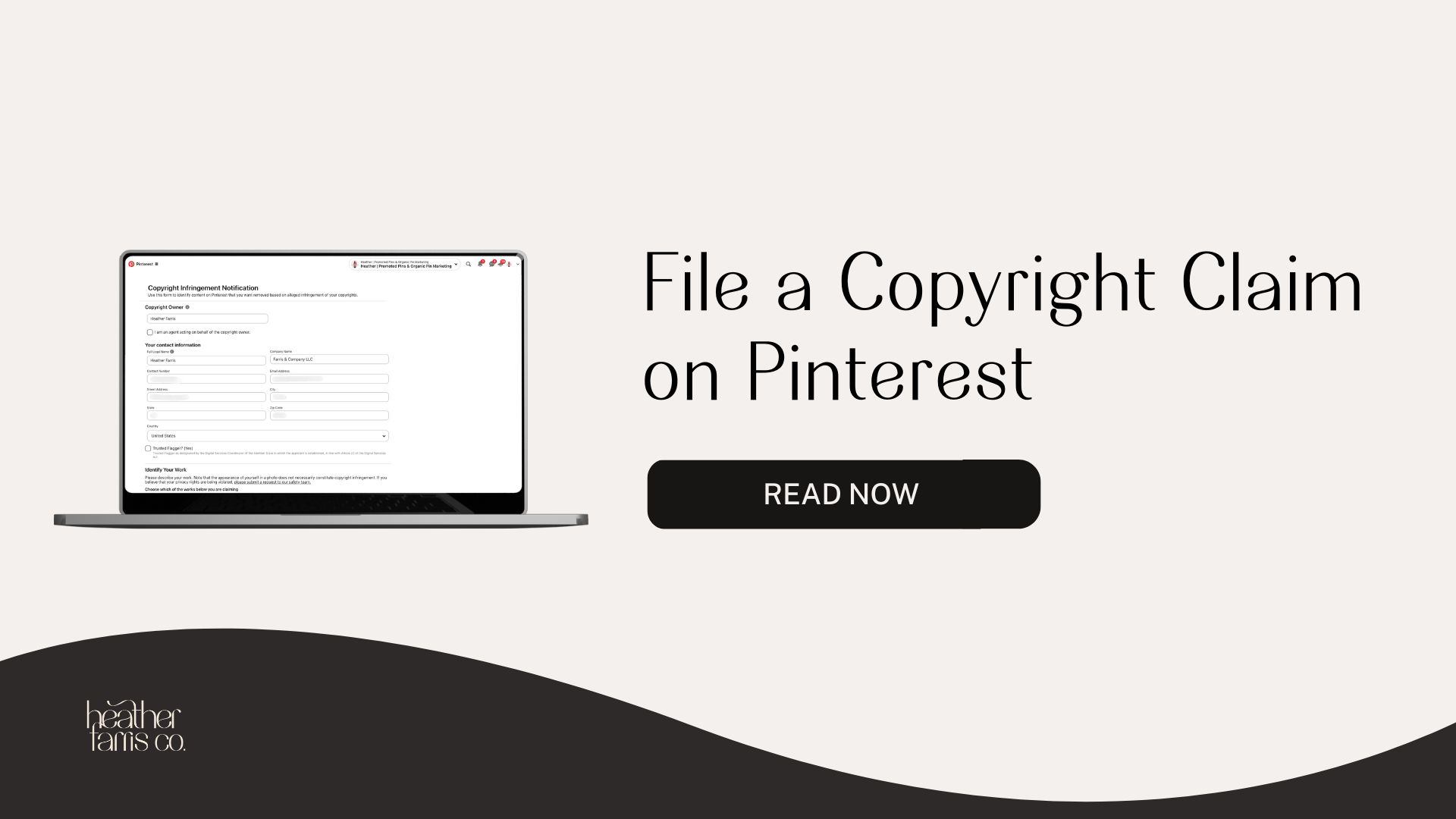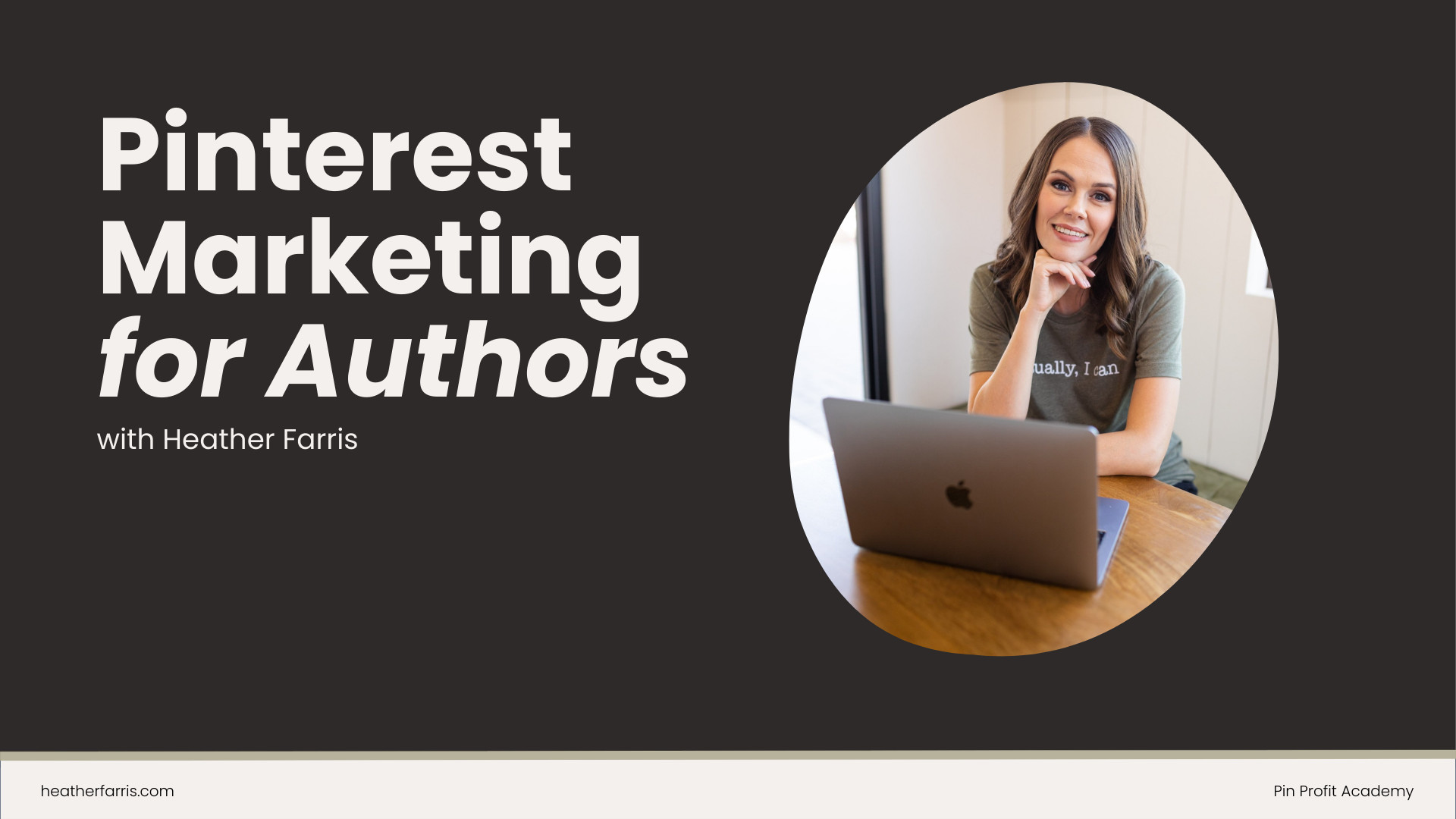Heather is a seasoned
Pinterest marketing expert & educator using the platform since you could reach the bottom of the feed - 2010.
About Heather Farris >
Create a Pinterest Marketing Plan in 5 Easy Steps
April 24, 2022
Have you ever wondered what you need to pin or how to create a pinterest marketing plan? Whether you are confused about using Pinterest trends or just understanding how to choose what to make pins for, I’ve got you covered.
In this blog post, I will walk you through exactly how to create a pin plan for your business for the next 30 to 90 days.
I will take you through the exact steps that I take all of my clients’ strategies through. This is what I teach inside my Pin Profit Academy, where I am educating our students on Pinterest.
Creating your pin plan starts with a little bit of brainstorming initially. I want you to ask yourself a few questions:
- What content am I trying to create?
- What goals am I trying to achieve in the next 30 to 90 days?
- Are there launches coming up that I need to pencil into the calendar and for which you need to create content?
I also want you to cross-reference the events happening in your business with Pinterest Trends.
Pinterest Trends is a tool that allows you to see when content to searches are down and going up. It’s just like Google Trends, except it’s on Pinterest.
I want you to do a bit of brainstorming and start thinking about the content you will create in the next one to three months (30 to 90 days).
RELATED: Pinterest Trends: How to Use the New Pinterest Keyword Tool
Step 1: Create your Content Library
To create your pin plan, we will start with actually creating a content library. Most people fail to do this. They make one piece of content, promote it one time, and then it’s gone. They never think about it again. The worst thing you can do in your business is spending a lot of time creating a piece of content that never gets love ever again.
I want you to build a content library for yourself. There are two ways to go about this:
- You can create it into ClickUp
- You can use a spreadsheet
Spreadsheets are generally easier to use in the beginning. You are not using any crazy formulas. You are just getting your content plan put into the spreadsheet.
If you need something like this, I sell a Pinterest System. You can grab it and use it. If you want to get started with your own, you can export your content from your website. Or do the dreaded long version and copy-paste it into a spreadsheet. Alternatively, you can use ClickUp, for which I sell templates like the one below in the same Pinterest System.
I want you to get a content library in place. That way, you know what content you have in your business to promote and if any of that content relates to the goals you have coming up in the next one to three months.
This is the easiest way for you to create a content plan because you can choose from this library of content and start creating pins for it quickly.
RELATED: How to Manage Your Pinterest Strategy in ClickUp
Step 2: Create your content plan for the month or quarter
The next step is to create a content plan for the next one to three months. What content should be created for your business to get to the goals you want to achieve?
If you are launching a product in the next three months, you probably need to create awareness content that relates to that product. Consider the questions people will have and search to find your product. So, I would consider that and add that to my content plan.
What are the most common questions? What are the most common objections people have? Start creating blog content around that.
RELATED: Why You Need a Content Strategy Before You Ever Begin Marketing
Step 3: Review your analytics
The next step is for people who are a bit further along in their marketing journey and if you have Google Analytics installed on your website. If you do not have Google Analytics installed on your website and are not tracking your data, you need to do that right now.
Skip right past installing the old-fashioned UA tag and go ahead and get GA4 installed. That way, come next year in summer 2023, you are all set up, and you have plenty of GA4 content.
Here is where a lot of people get lost when they are looking at their analytics. I want you to go to Google Analytics, and in the old view, you are going to go to Acquisitions > Social > Network Referrals. You are then going to choose Pinterest.
You will change the date frame to the same time last year on that screen. So if you are looking to create a pin plan for April, you will look at April of the previous year. If you want to create a pin plan for May, you will look at May of last year.
Now, you could back that up by 90 days. So if you are looking to create a pin plan for May, you could look at February. February to May and see what was popular in that time frame.
I want you to do this because typically, we have trends that happen in our own industries that will happen again. So we have the same user behavior. When spring happens, people are looking for gardening tips. When summer happens, people are looking for swimming and outdoor activities.
So those industry trends will remain. Whatever content was popular on your site last year around this time will be popular again, and you want to create pins for it again.
RELATED: Pinterest Analytics: A Simple Guide to Read & Analyze Your Data
Step 4: Validate your content against Pinterest trends
The next step is actually taking what you find in your analytics and cross-referencing that with Pinterest trends. That way, you can see the ups and downs, but you can also see what other searches people are looking for related to that topic.
Pinterest trends will actually give you related searches linked to what you put in. So if you search for ‘backyard patio,’ they are probably going to give you:
- small backyard patio
- small landscaping patio
- patio ideas
So you can see what other people are searching for related to that main topic and see if you need to switch your verbiage a little bit.
RELATED: Pinterest Trends: How to Use the New Pinterest Keyword Tool
Step 5: Pull your final pin plan together
Once we have our content library and content plan, and you’ve pulled our analytics in, you will start to pull in the important pieces of content into your action plan. Into this is what I need to create a pins list. And that is where you are going to pick up by doing a little bit of additional keyword research. You are going to make a Pinterest image, and you will schedule it.
Now I create pin plans on a week-by-week basis. One of the assistants on my team creates pin plans for an entire month. We actually have to make a pin plan for one of our clients 60 days in advance. So this will vary, business to business, person to person.
However, I would suggest creating a minimum of a seven-day pin plan at a time. So create a week at a time, and maybe you do four weeks, but you have each week broken out. That way, you can visually see what you need to create content for. It is a lot less overwhelming when it comes to creating the pins for that piece of content.
You don’t have this huge list for which you need to create pins. You just have a smaller list. Create pins for that smaller list, and it’s a big win. Get them scheduled and let them go out while you start on the next list.
RELATED: Pinterest Scheduling with Canva and Planoly (My Pinterest System Workflow)
Final thoughts on how to create a pin plan
If you want to snag any of the templates I have discussed in this post for ClickUp or the spreadsheet, you can go to PinProfitAcademy.com. They are a part of the membership. When you join, you get the ClickUp resources and the Pinterest system. So join us, and I promise not to hold you hostage at a high rate every month. You can come and go as you please.
So that’s all the information you need for creating a pin plan. It doesn’t seem so hard, right? We are looking at our content plan, we are looking at our content library, we are looking at our analytics, and we are pulling from these three things to things that we’re going to create pins for. No more guessing.
If you need any help with creating your own pin plan or have any questions about this, leave us a comment and watch my Pinterest marketing tutorials. I will see you again next week.
Pin It For Later

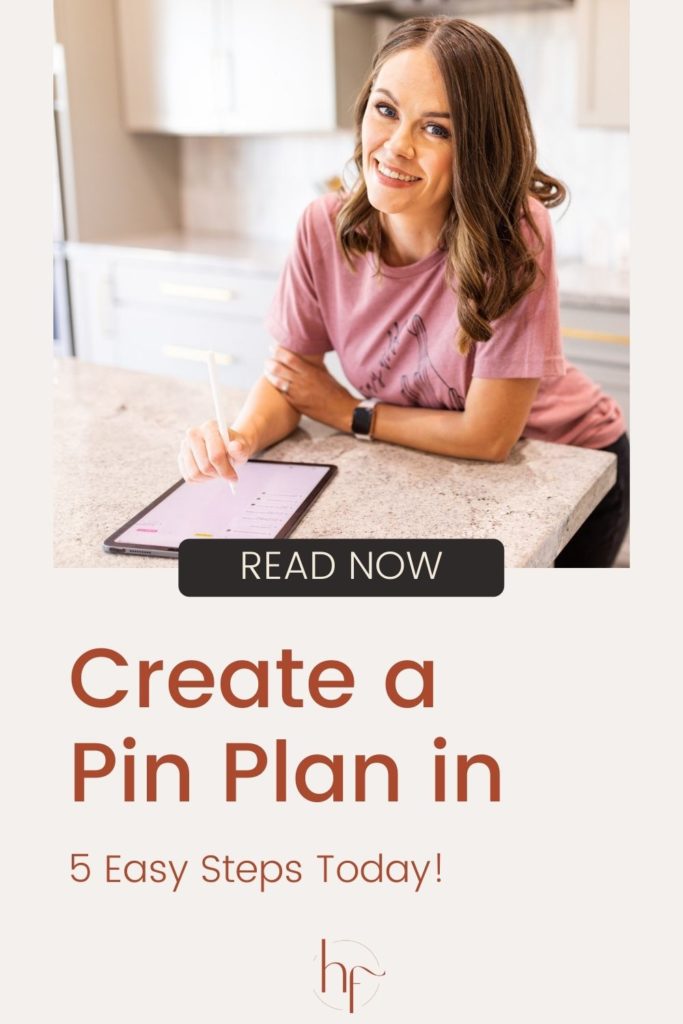
Heather Farris went to school for accounting and worked for years in banking and finance. After finding all of that entirely too boring she started her first blog in her basement in August of 2016. She has started 3 blogs in the marketing, motherhood and travel niches and used Pinterest to grow them all. She quickly became the go-to Pinterest strategist in her peer circles and has been implementing strategies, driving traffic and sales through organic and paid tactics for her clients. On this blog and her YouTube channel, as a renowned Pinterest marketing expert, she educates the public about clear and transparent marketing strategies to help them to grow on Pinterest and in other places online as a renowned Pinterest marketing expert.

